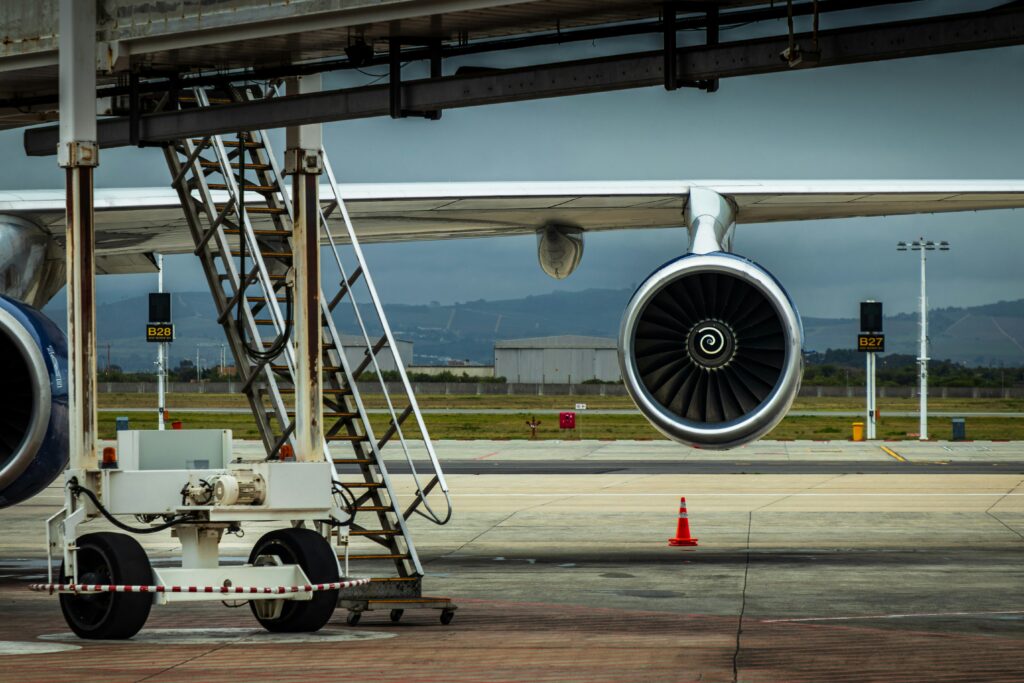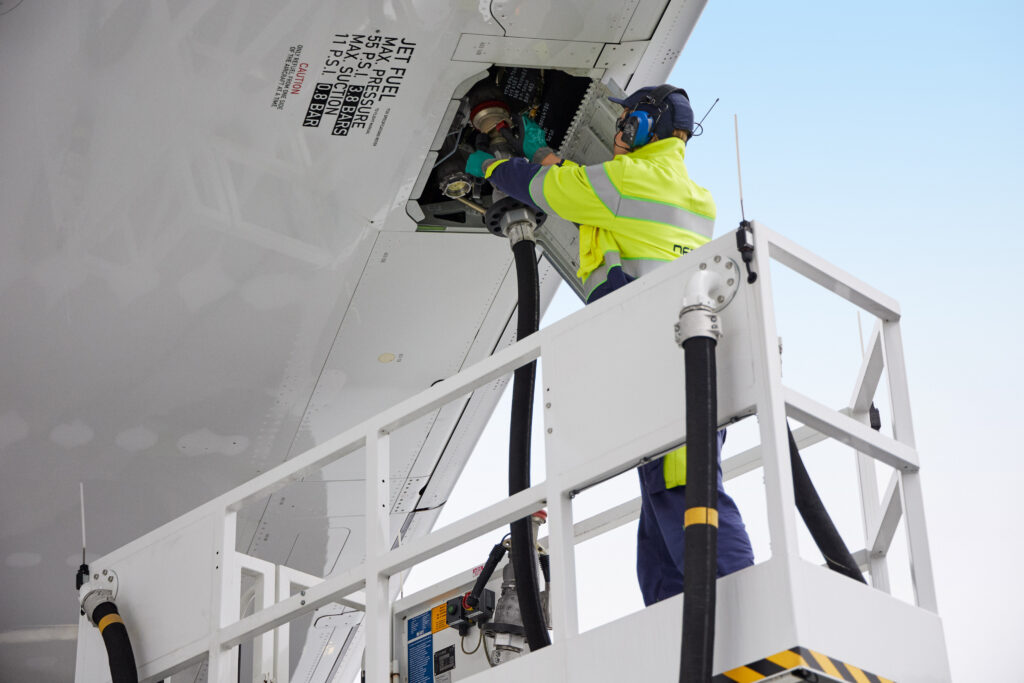From Fryer to Flight? Europe’s Waste-Fuel Gamble
Your Belgian fries could soon power planes, but without stronger safeguards, Europe’s “waste-to-flight” dream risks slipping into greenwash.
In a small Brussels frituur, the smell of fried potatoes fills the air. Fresh golden fries rise from the oil, crisp and hot. But beyond the paper cone and mayo lies another story, one that may end not on your plate, but high above the clouds.
Used cooking oil, or UCO, once a greasy kitchen leftover, has become an unlikely hero in Europe’s race toward cleaner skies. With the EU’s ReFuelEU Aviation regulation requiring 2% Sustainable Aviation Fuel (SAF) at all airports by 2025, rising to 70% by 2050, every drop of oil matters.
Across Europe companies like Quatra collect waste oil from 180,000 restaurants and households in 11 countries, refining it into a golden feedstock for jet fuel. The transformation follows a process called HEFA, Hydroprocessed Esters and Fatty Acids, which turns used oils into fuel that cuts up to 80% of lifecycle emissions compared to fossil kerosene.
Yet, as recent legal briefings warn, the term “sustainable aviation fuel” can itself be misleading. Under new EU and UK consumer protection laws, the word “sustainable” is considered too absolute, its use in advertising can imply an environmental performance no single fuel type can guarantee. Regulators and courts have ruled that SAF claims must clearly explain what feedstocks are used and what real emissions savings they achieve, or risk being classified as greenwashing.
Europe’s greasy gold rush
Belgium, with its deep-frying tradition, is part of a broader European movement. The EU currently depends on imported UCO from China, Malaysia, and Indonesia for nearly half its supply, but those trade routes are tightening. In late 2024, China removed export tax rebates and began channelling its waste oils into domestic SAF production. Meanwhile, Indonesia restricted exports to feed its expanding biodiesel and aviation fuel mandates.
Prices reflect this new competition: the UCO spot price in Amsterdam-Rotterdam-Antwerp hit $1,210 per tonne in December 2024, the highest in over two years. Supply uncertainty has made this greasy byproduct one of Europe’s most sought-after resources.
While the EU prioritises next-generation fuels from green hydrogen and captured carbon, nearly 80% of current SAF still comes from waste oils like UCO. Here is the paradox: the most mature, scalable solution is also the one in shortest supply.
And herein lies another tension flagged by environmental lawyers: supply limits and fraud risks. The European Court of Auditors has already found evidence that virgin palm oil is sometimes relabelled as “used cooking oil” to qualify for subsidies. Such practices not only distort emissions accounting but also expose companies and investors to legal and reputational risks under Europe’s anti-greenwashing rules.

A joint investigation by The Straits Times and Climate Home News further revealed how this problem extends far beyond Europe. The reporters uncovered an opaque global supply chain in which barely used or virgin palm oil is allegedly being passed off as UCO, particularly in exports from Malaysia to Spain, the EU’s largest SAF market. The investigation found that Malaysia exported three times more UCO than it likely produces, with weak verification systems and heavy reliance on self-declared certifications. Experts described the resulting data as “ridiculous,” warning that Europe’s reliance on Asian imports exposes refineries and airlines to significant fraud and greenwashing risks. As demand for SAF surges under new EU blending mandates, the investigation cautions that without stricter auditing and traceability, UCO could become aviation’s next climate credibility crisis.
In light of these findings, REVOLVE asked Neste, one of the world’s leading SAF producers, how it prevents fraudulent feedstocks and ensures transparency in global waste-oil supply chains. The company asserted that it sources renewable raw materials from carefully selected suppliers and uses strict traceability systems to prevent fraud across its supply chains. Neste stated that only suppliers that meet stringent sustainability criteria are approved, with “all of our contracts including strict sustainability clauses.” The company emphasised compliance with EU RED and other regulations “covering the entire supply chain from raw material sourcing to final product,” adding that these controls are essential to guarantee verified waste-and-residue-based inputs.

A circular dream meets global reality
Europe’s circular economy narrative, where waste becomes energy, finds its purest form in used cooking oil. But as European collectors ramp up recycling networks, the global race for UCO intensifies.
In Brazil, a study by Agroicone mapped out over 213,000 tonnes of recoverable UCO annually, enough to produce 111 million litres of jet fuel. Yet only 10% of potential waste oil is actually collected, as much of it ends up clogging drains or rivers. Programs like Cargill’s “Ação Renove o Meio Ambiente” show promise, but national coordination is still missing.
Similarly, Indonesia could collect up to 715,000 tonnes of UCO a year, but without central regulation, most of it is lost, or exported. The International Council on Clean Transportation (ICCT) suggests a Used Cooking Oil Fund financed through export levies, mirroring Indonesia’s palm oil biodiesel model. With such a system, Indonesia could meet its 1% SAF blending target by 2027 while reducing palm dependence.
These examples mirror Europe’s own crossroads: without better collection, the continent’s fryers will never fill its fuel tanks.
But there’s also the policy paradox. The same EU rules that push SAF adoption, like ReFuelEU Aviation, don’t override consumer protection laws. In other words, even if an airline meets its mandated fuel-blending targets, it cannot legally advertise those fuels as “sustainable” without detailed, verified lifecycle data. Compliance with mandates is not a free pass to market green credentials.

From kitchen bins to jet engines
Back in Belgium, Quatra’s OlioBox network allows citizens to drop off their household oils, creating a more democratic supply chain. Each litre collected prevents up to 20,000 litres of water contamination and avoids methane emissions from improper disposal.
The collected oil is filtered, dried, and shipped to specialised refineries, where hydrogen treatment transforms it into sustainable aviation fuel. Airlines such as KLM and Lufthansa already blend small percentages of SAF on select routes, signalling an early take off for this circular fuel.
Yet, under growing regulatory scrutiny, airlines must avoid overselling such initiatives. The UK Advertising Standards Authority and Dutch courts have ruled that phrases like “fly sustainably” or “carbon-neutral flight” are misleading, since even SAF-powered aircraft still emit CO₂ and other warming agents. Offering passengers the option to “offset” emissions by purchasing SAF credits is also being challenged, as courts found that the purchased fuel rarely powers the specific flight in question.
However, the economics remain steep. UCO-based SAF costs more than triple conventional jet fuel, and even with EU incentives, the price gap threatens large-scale adoption. Experts argue that coordinated collection, fair subsidies, and transparent certification are essential to make frying oil-to-fuel pipelines viable, and legally defensible.
Turning to the issue of scaling production, REVOLVE asked Neste how Europe could control costs while meeting regulatory expectations. Neste stressed the need for strong policy signals, saying that “mandates create demand certainty”. The company cited its €2.5 billion Rotterdam expansion, which aims to raise capacity to 2.2 million tonnes by 2027. Neste contended that supply is not the immediate bottleneck, noting that “there is enough SAF globally to meet the EU and UK 2% targets,” and noting that its current 1.5-million-tonne annual capability “alone could hypothetically fulfil those mandates.”
At the same time, Neste emphasised that next-generation feedstocks will be essential for long-term scaling. The company asserted that Europe must “unlock raw materials from regenerative crops to forestry and agricultural residues, and develop technologies to use them.” While SAF can deliver “up to 80% lifecycle emissions reductions,” Neste cautioned that “credibility is key,” pointing to certification systems and SAF registries as tools to “provide transparency and trust.”
Expanding the feedstock pool
For all the enthusiasm around waste-based jet fuels, real sustainability depends on what goes into the tank, and who controls the supply chains. As Stavroula Zervopoulou working on the EU’s Circular Fuels project, cautions, “meeting the EU’s aviation fuel needs with sustainable aviation fuel is a massive challenge, but also a major opportunity.”
Her team’s work focuses on converting waste biomass, such as demolition wood, sawdust, and straw, into jet fuel using solar-powered pyrolysis. These feedstocks, she notes, are “low-cost, bio-based materials and importantly, they do not compete with food production.” That distinction matters: under the updated Renewable Energy Directive III (RED III), only waste and residue-based materials qualify as truly advanced biofuels.

Stavroula acknowledges that today’s biofuel landscape remains dominated by waste oils. “In 2019, 3.5 out of 4.8 million tonnes of advanced biofuels in the EU were produced as fatty acid methyl esters for biodiesel from waste fats and oils,” she explains, “with only small percentages from agricultural and forest byproducts such as used cooking oil, tall oil, and cellulosic feedstocks.” In other words, while used cooking oil remains the star of Europe’s “waste-to-flight” story, it’s also a bottleneck. As demand outpaces genuine supply, Circular Fuels’ emphasis on solid residues and solar-assisted conversion “helps expand the sustainable feedstock base beyond waste oils,” offering a cleaner, more verifiable pathway to scaling up aviation fuels without repeating the mistakes of palm-based biodiesel.
“We are conducting a multi-criteria life cycle assessment,” Stavroula explains, “to pinpoint not just where we can scale up, but how to do it strategically and sustainably.” The project couples solar heat with biomass conversion, reintegrating by-products like biochar into soils to restore nutrients and lock away carbon. “This helps close the loop,” she adds, “making agriculture, fuel production, and climate goals work in harmony.”
Yet this so-called harmony is fragile. Even within Europe, she warns, “the real challenge is not about importing waste from outside the EU but figuring out how to better coordinate supply chains within Europe.” Without that coordination and transparency, the promise of “frying oil–to–flight fuel” risks becoming, quite literally, smoke in the sky.
Does waste really have wings?
As night falls over Brussels Airport, a jet lands down the runway, its engines partly powered by what once sizzled someone’s lunch. The line between consumption and conservation blurs.
From Belgian frites shops to Indonesian hawker stalls, the world’s used oils are telling a new story: that our waste may no longer sink down the drain but soar into the sky. But before these flights can truly claim to be sustainable, the industry must match technological progress with transparency. The law now makes clear: frying oil can lift planes, but not empty promises.
Tomorrow’s flights, it seems, might just begin with yesterday’s fries, so long as we’re honest about what’s in the tank.
